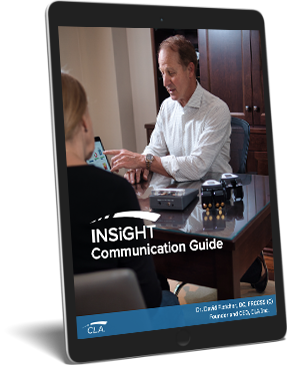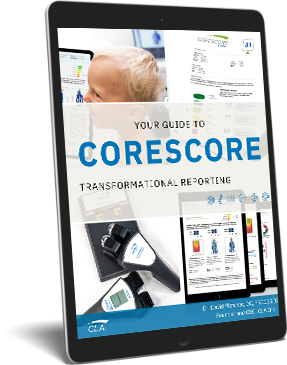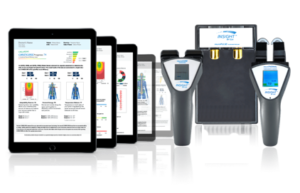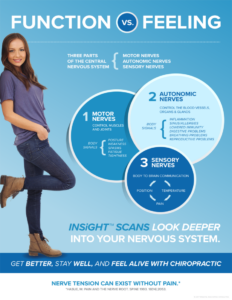Chiropractors love to talk about alignment and movement. In fact we love to show and discuss how spinal alignment is related to deteriorating postures and degenerative spines. This is all true, of course, but it opens up a new round of questions like: How is Chiropractic much different than physiotherapy or massage therapy?
There’s a much simpler approach to introducing Chiropractic and one that makes a LOT of sense at every level. It’s called ‘tuning and toning’. It’s not akin to tuning guitars or toning your abs. Or is it?
The way that chiropractic adjustments work is that they tune-up the communication of the spinal nerves.
That means that the tone of the entire nervous system is less ‘noisy’ and it can perform much better.
Stress leaves a stain on the nervous system
People understand that stress is generally a negative experience. It sucks the energy out of life and it sucks the efficiency out of the nervous system. At times, stress can be a positive experience if it’s used constructively, such as when it is in combination with exercise or solving complex problems. Rather, it is the ongoing toxic stress, that is often a huge part of everyone’s daily life, that interferes with the way that the nervous system listens and communicates.
Here’s a little something to remember. Stressful events don’t just pass through you without leaving a mark. Your body and mind memorise these events and store them in the dark recesses of your nervous system. Repetitive stressors like toxic dietary and medication habits or toxic relationships are memorised and gradually, the sum of all these layers of old distress alter the efficiency in the way the body responds and adapts. Stress is heavy. It’s like a stain on the nervous system. Imagine a glass of red wine spilling on a beautiful white carpet. That’s going to leave a mark! Deep repetitive stress is like that. It interferes in the perfection of how the nervous system communicates. These stains are actually tension patterns, put in place to resist the ongoing stress and reduce the potential damage. Over time they need to be ‘adjusted’ to be more at ease and this becomes the measure of how well a patient is responding and recovering under the Chiropractors watchful schedule of adjustments. The beauty of using INSiGHT scanning technologies is that you can easily see the stains by assessing the patient’s scans. These include heart rate variability which shows resiliency, EMG that identities areas of postural energy wasting and thermography that helps pinpoint the stained patterns.
The importance of thoughtful care planning can not be undervalued here.
Tuning and Toning isn’t only for Guitars and Abs
Let’s revisit the concept of guitar and abs. A guitar string has to have just the right tension on it to be in tune. Too much or too little tension makes the guitar perform out of tune. The guitar strings are like the nerves that bring messages to the brain and take messages from the brain to all the body systems. You don’t want those ‘guitar strings’ to be out of tune.
Now about those abs. Muscle tone is controlled by the nerves. If you have poorly tuned nerves then you will develop too tight or even flabby muscles. Let’s take that a bit further. Poorly tuned nerves lead to poorly toned muscles. How is anyone supposed to survive in our world governed by gravity with that combination of poor nervous system and muscle function? The answer is they don’t… or at least they don’t perform well. Their posture warps and eventually they start to feel misaligned and then comes the pain manifests and expresses itself. It takes us back to the idea of spinal alignment and poor postures. The neuroCORE (EMG) can be used tableside or in the exam room to instantly show how the spine is being supported by the postural muscles.
Clinical certainty can be summed up by the statement, ‘Test, don’t guess’
In my opinion, the real difference between chiropractic and physiotherapy or massage therapy is that Chiropractors get the sequencing right.
‘The genius of the Chiropractic approach is that it begins by assessing and measuring the tone of the nervous system and then setting a plan in place to keep the nervous system tuned to the max’.
Palpating muscle tone is a good start but it’s the deeper neurological connections that tell a bigger story. Using scanning technologies is the ideal way to detect patterns of dissonance in the nervous system. INSiGHT scans reveal the stains on the nervous system that affect the way a person relates and adapts to all the nuances of their life. They also reveal the power of the Chiropractic adjustment. The Chiropractic adjustment releases unhealthy tension patterns and provides a roadmap on how to restore the tone to more optimal levels.
Remember, guitars and abs love to be tuned, so does the nervous system!
If it all begins with the nervous system, who said the beginning was the end? If you love aligning spines and restoring postures. GO FOR IT. But first and always, check the tone in the nervous system and become masterful at tuning it along with the body it controls. Without those neurological controls in place, we all get out of control and stay out of control. Ask yourself, are you satisfied with how your clients feel or how they function? Checking how their nervous system functions is incredibly simple and reliable when you use INSiGHT scanning.
Last thought
Chiropractic has answers to making lives stronger and more flexible, just like spines. Focus on tuning and toning and trust the inner wisdom that has guided human health and performance from the beginning.
– Dr. David































































